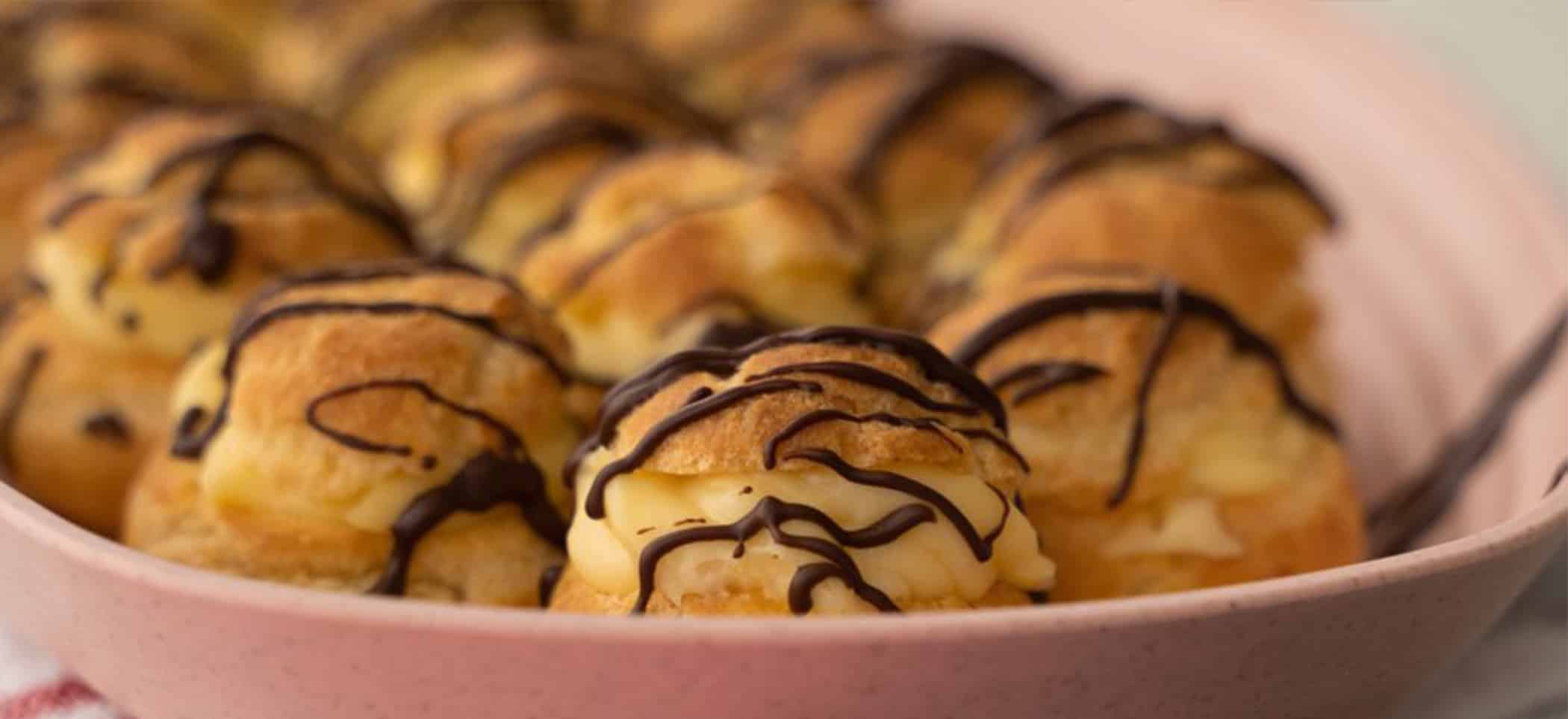

Directions
BEAT egg yolks in medium bowl or glass measure; gradually STIR IN milk until blended. MIX sugar, cornstarch and salt in large heavy saucepan. GRADUALLY stir in a small amount of milk mixture, making a smooth paste. GRADUALLY stir in remaining milk mixture until blended.
COOK over medium-low heat, stirring constantly, until mixture thickens and comes to a boil, 20 to 25 minutes. BOIL and stir 1 minute. REMOVE from heat immediately.
COOL quickly: Set pan in larger pan of ice water. STIR occasionally and gently for a few minutes to hasten cooling. STIR IN vanilla. PRESS piece of plastic wrap onto surface of pastry cream to prevent a “skin” from forming. REFRIGERATE until thoroughly chilled, at least 1 hour.
Ingredients
- 3 large EGG yolks
- 3 cups milk
- 1/2 cup sugar
- 1/3 cup cornstarch
- 3/4 tsp. vanilla
Tips
Plan ahead: It takes at least 35 minutes to make a vanilla custard filling. Make pastry cream well in advance, so it can chill thoroughly and thicken up. A hot or warm filling will make pastries soggy.
Secrets of success: Low heat, a heavy saucepan, constant stirring and patience are the keys to making the perfect vanilla pastry cream filling. It takes at least 20 to 25 minutes for the pastry cream to thicken. If you increase the cooking temperature to try to speed the process along, the mixture is likely to curdle. Stirring constantly, making sure to cover the entire bottom and the corners of the pan, prevents scorching and ensures that the mixture heats evenly.
Check for bubbles: It’s hard to see the first signs of boiling when stirring constantly. When you begin to feel a heavier drag on the spoon, start lifting the spoon up occasionally to check if any large bubbles are bursting at the top of the mixture. Keep cooking and stirring until large bubbles appear. Then boil and stir for 1 minute.
Cool quickly: The ice water bath is another aid to prevent curdling. It cools the pastry cream and stops the cooking quickly. Have it ready in advance. At this point it is important to stir only occasionally, not constantly. Too much stirring will break down the structure of the thickened pastry cream and result in a thin consistency.
Per serving: 1/12 of recipe
- Calories 91
- Total fat 2 g
- Saturated fat 1 g
- Polyunsaturated fat 0 g
- Monounsaturated fat 1 g
- Cholesterol 50 mg
- Sodium 78 mg
- Carbohydrates 15 g
- Fiber 0 g
- Sugar 11 g
- Protein 3 g
- Vitamin A 49 mcg
- Vitamin D 1 mcg
- Folate 9 mcg
- Choline 45 mg
- Calcium 78 mg
- Iron 0 mg
- Potassium 92 mg
To ensure food safety, eggs should be cooked until both the yolk and the white are firm. Consuming raw or undercooked eggs may increase your risk of foodborne illness, especially for those with certain medical conditions. For recipes that call for eggs that are raw or undercooked when the dish is served, use either pasteurized shell eggs that have been treated to destroy Salmonella, or use pasteurized egg products.
